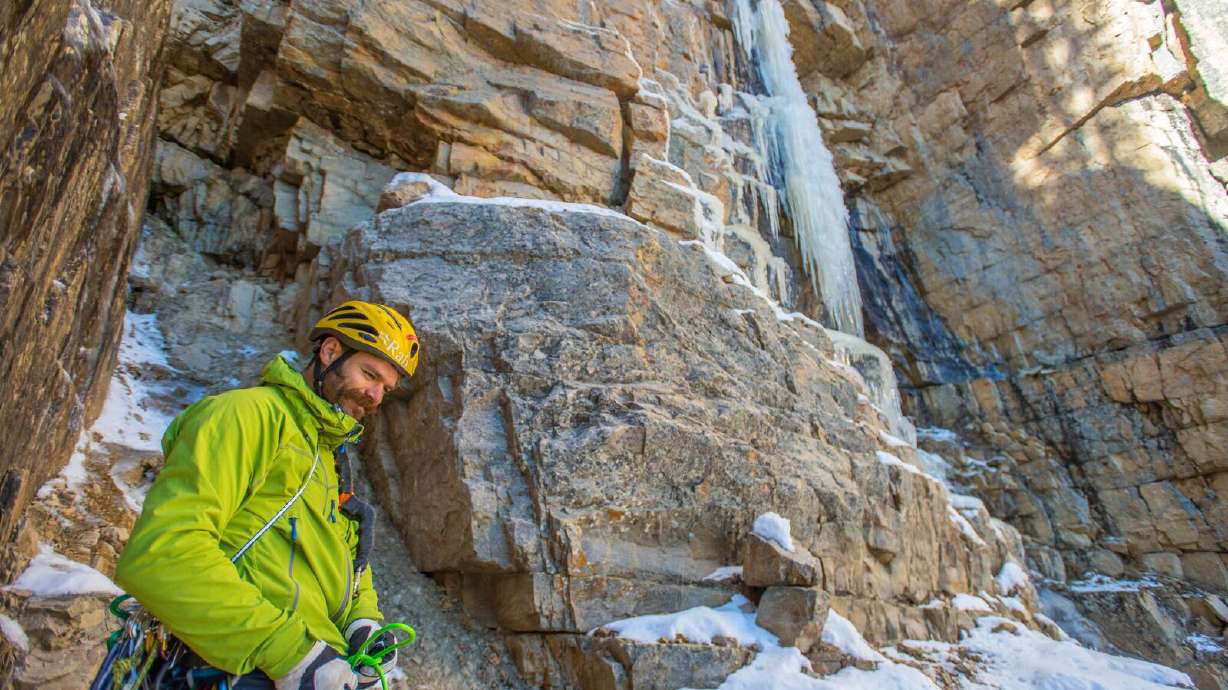Estimated read time: 4-5 minutes
This archived news story is available only for your personal, non-commercial use. Information in the story may be outdated or superseded by additional information. Reading or replaying the story in its archived form does not constitute a republication of the story.
SALT LAKE CITY (AP) — American mountain climbers Kyle Dempster and Scott Adamson earned reputations as two of the world's best by pushing limits and setting out to conquer icy, steep routes others couldn't scale.
That fearlessness and passion led them to a treacherous mountain peak in a remote part of Pakistan this summer for their second attempt at making a climb never done before.
They nearly died last year on the first try, miraculously surviving a 400-foot fall down the mountain.
This time, they did not make it off the mountain.
A search launched Aug. 28 for the missing climbers was called off Saturday by their families after helicopters found no signs of the men or their equipment on the mountain they started climbing on Aug. 21.
On Wednesday, search officials said in interviews that Dempster and Adamson were presumed dead.
Dempster, 33, and Adamson, 34, were two of the most accomplished alpinists of their generation and Dempster twice won the coveted Piolets d'Or climbing award, most recently in 2013 for a climb in the same part of Pakistan.
The two, both from Utah, went missing amid snowy, cold and stormy conditions on the north face of a 23,901-foot peak known as Ogre II within a group of mountains called Baintha Brakk.
Exactly what happened may never be known, but it's possible they were buried by an avalanche or fell into a crevasse, said Dan Richards, CEO of Global Rescue, a private organization involved in the search. Both of those scenarios would explain why searchers found no signs of the two or their equipment.
Another possibility is that Dempster and Adamson got injured, fell or succumbed to bad weather conditions — and searchers simply could not find their remains. Nighttime temperatures dropped into single digits and it rained and snowed during the period they were unaccounted for, he said.
They left a satellite text messaging device with a GPS locator at their base camp, depriving them of a way to communicate from the peak, said Phil Powers, the CEO of the American Alpine Club, who received regular updates on the search. He said it is not clear why they left it behind but that climbers regularly try to shed weight ahead of climbs meant to be performed quickly.
Utah-based Black Diamond Equipment, which sponsored Dempster, called the climbers pillars of the state's climbing community in a tribute posted Tuesday on the company's Facebook page.
"Kyle and Scott are not coming home, but their spirit, stoke and smiles will live on in the hearts of many," it said.
For what ended up being their final climb, Dempster and Adamson traveled to a highly remote spot of the world not frequented by mountain climbers. Base camp on the Choktoi Glacier was a three-day hike following a 7-hour drive from the nearest city.
The last time anyone saw them was the day after they set off from their base, when their cook spotted the climbers' head lamps about halfway up the peak. The next day, a storm moved in that lasted for more than a week.
A window of clear weather finally opened on Sept. 3 that allowed Pakistani military helicopters to fly over the climbers' route — 13 days after Dempster and Adamson started up the mountain with enough food and supplies for five days.
After the search was called off, rescue teams left a small shelter and supplies at base camp — hoping the two were still alive and would make it down the mountain. By Tuesday, Richards and Black Diamond officials had concluded there was no way Dempster and Adamson could have survived.
"After the first few days of somebody missing in the high mountains where these guys were, it is extraordinarily uncommon to find people alive," said Richards, whose company rescues stranded climbers.
In an essay last year about the unsuccessful ascent of the mountain, Dempster wrote that he and Adamson fell 400 feet because he did not properly drill an ice anchor for their rappelling line.
He described a terrifying plunge as they tumbled and bounced down the mountain, concluding they "cheated the numbers" by surviving.
Powers praised Dempster and Adamson as accomplished alpinists and said he believed they went back confident they could succeed by avoiding the mistake they made the first time.
"I think they thought: This is big, this is hard, but we can do this. That just drew them in more deeply," Powers said.
Copyright © The Associated Press. All rights reserved. This material may not be published, broadcast, rewritten or redistributed.








